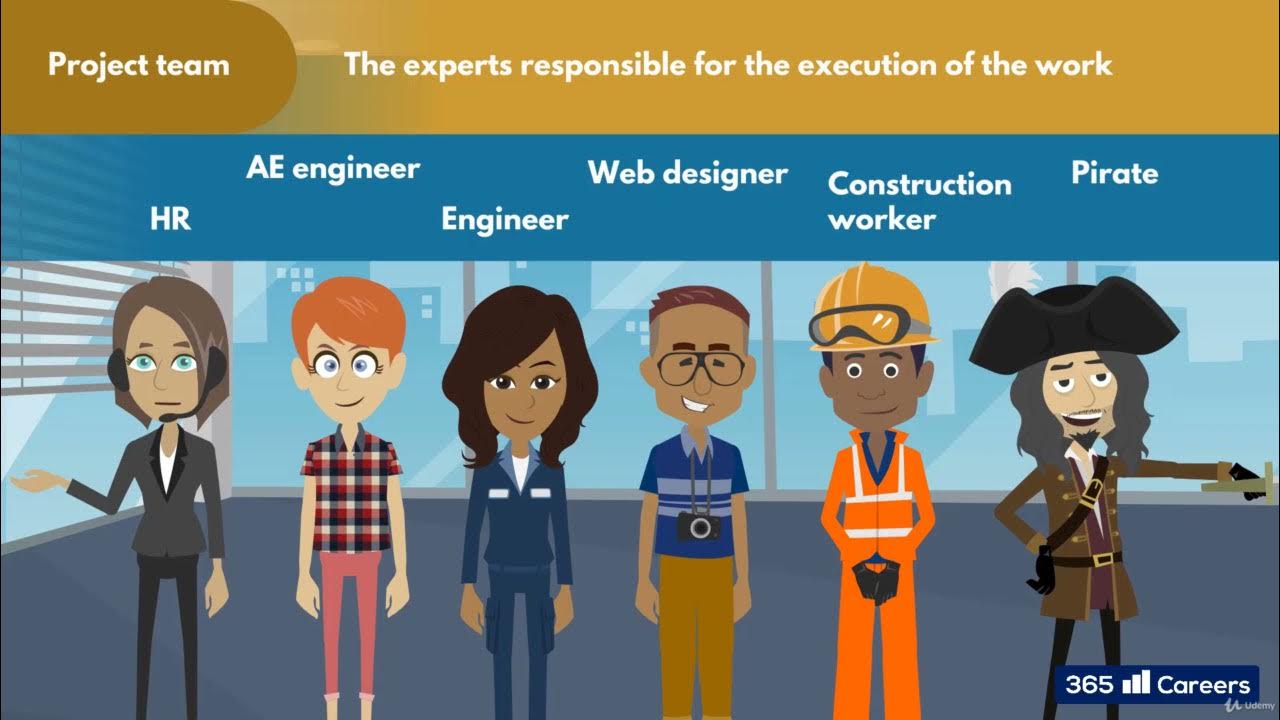Simple project management & triple constraints
Summary
TLDRIn this Project Management tutorial, St Nygaard introduces the foundational concepts and principles that drive successful project execution. He emphasizes the importance of understanding the project triangle—cost, time, and scope—while balancing these elements to achieve project success. The video explores key project management components such as defining scope, setting deadlines, and managing resources, as well as the significance of risk management and stakeholder engagement. Nygaard offers a structured approach to managing projects, helping viewers build a solid foundation to navigate the complexities of project management.
Takeaways
- 😀 The goal of the video is to increase awareness about basic project management principles, tools, and techniques.
- 😀 Not all projects are simple, and many fail due to a lack of proper foundational planning and management.
- 😀 The project triangle, also known as the triple constraints or project contract, consists of cost, time, and scope.
- 😀 As a project manager, your job is to deliver the project scope within the given deadline and approved budget.
- 😀 Cost considerations in a project include resource allocation and expenditures on materials or external resources.
- 😀 Time management involves setting both start and end dates, as well as breaking the project into phases like analysis, planning, execution, and closing.
- 😀 The scope of a project defines its purpose, direction, deliverables, and success criteria.
- 😀 Scope also relates to quality, ensuring the project meets the required standards and expectations.
- 😀 Success criteria are used to measure the project's effectiveness, such as achieving cost savings or fulfilling project goals.
- 😀 Risk management is essential in identifying potential risks that could affect the project's success.
- 😀 Stakeholder management involves understanding who has an interest in the project and how they feel about its progress and outcomes.
Q & A
What is the main objective of this project management tutorial?
-The main objective of this tutorial is to increase awareness of the basic elements of project management, including tools and techniques, by explaining the fundamental structure of project management in a simple and accessible manner.
What is the project triangle, also known as the triple constraints?
-The project triangle, also referred to as the triple constraints, consists of three core elements: cost, time, and scope. These elements are key to managing a project and ensuring it is delivered within the agreed budget, timeline, and with the expected deliverables.
How does cost impact a project?
-Cost in a project refers to the resources and materials required for its completion. This includes both the internal resources (e.g., manpower from various departments) and external resources (e.g., materials or services purchased). Managing cost involves ensuring that these elements are well-controlled to stay within the project budget.
What does the time element of a project refer to?
-The time element refers to the project’s timeline, including both the start date and the end date. It is important to break down the project into phases, such as planning, execution, and closure, and track progress towards meeting deadlines.
What are the key components of a project’s scope?
-The scope of a project includes its purpose, direction, and deliverables. It is critical to define why the project is being undertaken, the specific deliverables expected, and the success criteria to determine how well the project has met its objectives.
What is meant by 'success criteria' in project management?
-Success criteria refer to the measurable outcomes or effects that define whether the project has been successful. This could include things like cost savings, quality standards, or achieving specific project deliverables.
Why is it important to define the scope early in a project?
-Defining the scope early ensures that everyone involved understands the project's objectives, deliverables, and success criteria. Without a clear scope, projects can lack direction, leading to misaligned expectations and increased risk of failure.
What is the role of risk management in project management?
-Risk management involves identifying potential risks that could impact the success of a project. By proactively addressing what can go wrong, project managers can take steps to mitigate these risks and ensure that the project stays on track to achieve its goals.
Who are stakeholders in a project, and why are they important?
-Stakeholders are individuals or groups who have an interest in the project, such as project sponsors, team members, and clients. Understanding stakeholders' perspectives and managing their expectations is crucial for ensuring the project's success and securing their support throughout its lifecycle.
How does project management balance the elements of the triangle (time, cost, scope)?
-Project management seeks to balance the three elements of the triangle—time, cost, and scope—by making trade-offs. For example, if time is limited, the scope may need to be reduced, or if the budget increases, additional resources may be allocated to meet the deadline. This balance is crucial for delivering the project successfully within the defined parameters.
Outlines

Esta sección está disponible solo para usuarios con suscripción. Por favor, mejora tu plan para acceder a esta parte.
Mejorar ahoraMindmap

Esta sección está disponible solo para usuarios con suscripción. Por favor, mejora tu plan para acceder a esta parte.
Mejorar ahoraKeywords

Esta sección está disponible solo para usuarios con suscripción. Por favor, mejora tu plan para acceder a esta parte.
Mejorar ahoraHighlights

Esta sección está disponible solo para usuarios con suscripción. Por favor, mejora tu plan para acceder a esta parte.
Mejorar ahoraTranscripts

Esta sección está disponible solo para usuarios con suscripción. Por favor, mejora tu plan para acceder a esta parte.
Mejorar ahoraVer Más Videos Relacionados

009 Project management terminology

What is the PMBOK Guide - PMI's Gude to the Project Management Body of Knowledge?

PENGANTAR MANAJEMEN PROYEK SISTEM INFORMASI | Pertemuan 2

Level Up Your Project Management With These 10 Essential Steps!

My Top 10 Project Management Concepts

Gestão de Projetos – Aula 10 - Gestão de Recursos Humanos
5.0 / 5 (0 votes)
